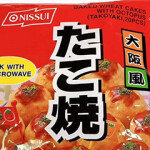Researchers find signs of Japanese tapeworm in Alaska salmon
A study published last week by the Centers for Disease Control and Prevention (CDC) reports that a Japanese tapeworm typically found in Western Pacific fish has been found in salmon from Alaska.
Since its identification in 1986, the Japanese broad tapeworm, Diphyllobothrium nihonkaiense, was thought to exist largely in salmon species caught in Russian and Japanese waters.
But in 2013 researchers found the Japanese broad tapeworm in various larval stages in pink salmon caught in North American fishing waters near Hope, Alaska. Gene sequencing confirmed that larvae were in fact D. nihonkaiense.
“Our main intent is to alert parasitologists and medical doctors about the potential danger of human infection with this long tapeworm resulting from consumption of infected salmon imported (on ice) from the Pacific coast of North America and elsewhere,” said the report, authored by Roman Kuchta of the Institute of Parasitology, Biology Centre of the Czech Academy of Sciences.
The rise of sushi consumption increases the possibility of the spread of tapeworm to areas where it is not endemic. Tapeworm larvae is killed by most freezing techniques, but Pacific salmon bound for sushi restaurants is packed on ice, allowing the larvae to survive deep in the muscle tissue.
According to the CDC, cooking salmon at 145 degrees Fahrenheit for four to five minutes will also kill the tapeworm.
Most people with tapeworm infections never show symptoms, but it can lead to diphyllobothriasis, an illness that causes abdominal pain as well as weight loss from vomiting and diarrhea and can last for decades if it goes untreated, even leading swelling and abdominal obstruction.
Most human infection from the tapeworm in Japan and Russia can be traced back to four species of salmon: chum, pink, sockeye and masu. All but the latter are caught in North American waters, and researchers warn that the Japanese broad tapeworm may have already spread to coastal waters up and down the Pacific coast of the United States.






Share